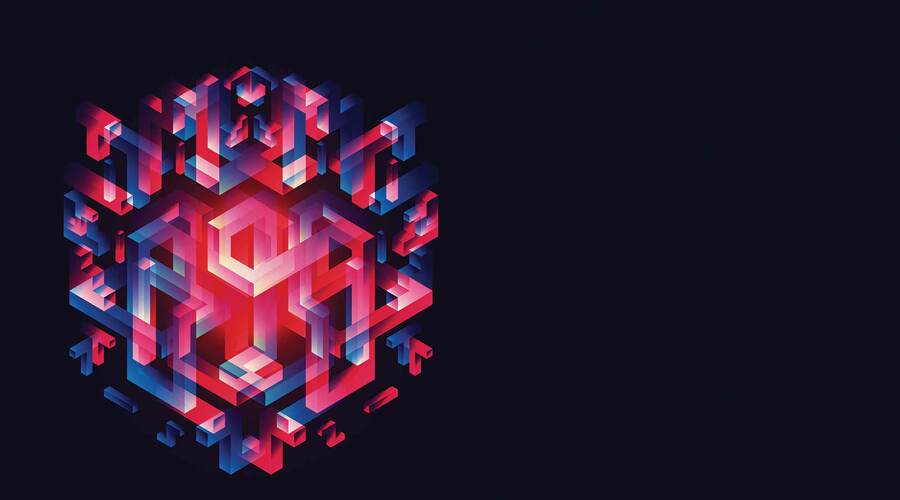Introduction
The integration of blockchain and the Internet of Things (IoT) holds immense potential for revolutionizing various industries. However, this convergence also presents significant challenges, particularly in terms of scalability and interoperability. In this article, we will explore the specific challenges posed by scalability and interoperability in blockchain and IoT integration and discuss the approaches and solutions that can address these challenges effectively.
Understanding Scalability Challenges
Scalability is a crucial aspect when considering the integration of blockchain and IoT, as both technologies generate massive amounts of data. Traditional blockchain networks face limitations in terms of transaction processing speed and capacity, hindering their ability to handle the scale of data generated by IoT devices. The sheer volume and frequency of data transactions can lead to network congestion, increased latency, and reduced overall system efficiency.
Scalability Solutions for Blockchain and IoT Integration
To address scalability challenges in blockchain and IoT integration, several solutions have emerged:
- Off-Chain Processing: Off-chain processing involves moving certain data processing tasks off the main blockchain network to alternative solutions. By delegating computationally intensive tasks to off-chain systems or sidechains, the scalability of the main blockchain network can be significantly improved.
- Sharding: Sharding is a technique that involves dividing the blockchain network into smaller, more manageable subsets called shards. Each shard can process a portion of the overall data transactions, allowing for parallel processing and increased scalability.
- Layer-Two Solutions: Layer-two solutions, such as payment channels and state channels, enable the execution of numerous transactions off-chain while still leveraging the security and decentralization of the underlying blockchain. These solutions enhance scalability by reducing the number of on-chain transactions.
Interoperability Challenges in Blockchain and IoT Integration
Interoperability refers to the ability of different blockchain networks and IoT devices to seamlessly communicate and share data with each other. Achieving interoperability is crucial for unlocking the full potential of blockchain and IoT integration. However, disparate standards, protocols, and architectures across different networks and devices present significant challenges.
Approaches for Achieving Interoperability
To overcome interoperability challenges, several approaches are being explored:
- Standardization Initiatives: Standardization efforts aim to establish common protocols, data formats, and communication standards that enable interoperability between blockchain networks and IoT devices. Collaborative initiatives among industry stakeholders play a crucial role in driving standardization efforts.
- Cross-Chain Communication Protocols: Cross-chain communication protocols facilitate interoperability by enabling seamless communication and data exchange between different blockchain networks. These protocols establish a common language for blockchain networks to interact with each other.
- IoT Gateways and Middleware: IoT gateways and middleware act as intermediaries between IoT devices and blockchain networks, translating and facilitating data exchange between different protocols and architectures. These solutions bridge the gap and enable interoperability at the device level.
Synergistic Solutions for Scalability and Interoperability
In practice, addressing scalability and interoperability challenges often requires a combination of approaches:
- Layer-One Protocols: Layer-one protocols, such as Ethereum 2.0, are designed to tackle both scalability and interoperability challenges simultaneously. These protocols employ techniques like sharding and consensus mechanisms to enhance scalability, while also enabling cross-chain communication and interoperability.
- Hybrid Architectures: Hybrid architectures combine the strengths of both public and private blockchains to achieve scalability and interoperability. Public blockchains provide security, decentralization, and interoperability, while private blockchains offer scalability, privacy, and control.
Case Studies: Successful Implementations

- Polkadot: Polkadot is a multi-chain platform that aims to achieve interoperability between different blockchain networks. It enables cross-chain communication and data transfer, allowing for scalable and interconnected blockchain ecosystems.
- IOTA Tangle: IOTA Tangle is a distributed ledger technology specifically designed for the IoT landscape. It employs a Directed Acyclic Graph (DAG) structure instead of a traditional blockchain, enabling high scalability and feeless transactions for IoT devices.
Scalability Solutions for Blockchain and IoT Integration
- State Channels: State channels enable off-chain transactions between parties, reducing the load on the main blockchain. By conducting frequent, low-value transactions off-chain and only settling the final result on the blockchain, scalability can be greatly improved.
- Sidechains: Sidechains are separate blockchains that are interoperable with the main blockchain. They allow for specific use cases or applications to operate independently while still being able to interact with the main blockchain when necessary. This can enhance scalability by offloading certain transactions to sidechains.
- Optimized Consensus Algorithms: Traditional consensus algorithms, such as proof of work (PoW), can be resource-intensive and slow. Optimized consensus algorithms like proof of stake (PoS) or delegated proof of stake (DPoS) can significantly improve scalability by reducing the computational requirements and increasing transaction throughput.
Interoperability Solutions for Blockchain and IoT Integration
- Cross-Protocol Bridges: Cross-protocol bridges enable communication and data transfer between different blockchain protocols. These bridges serve as connectors, allowing transactions and information to flow seamlessly between diverse blockchain networks, fostering interoperability.
- Interoperability Standards: Establishing common interoperability standards, such as messaging protocols and data formats, ensures that different IoT devices and blockchain networks can communicate effectively. These standards enable data exchange and interaction without the need for extensive custom integrations.
- Oracle Services: Oracle services act as intermediaries between blockchain networks and external data sources, including IoT devices. Oracles provide trusted and verified data inputs to blockchain networks, enhancing interoperability by enabling the integration of real-world data into blockchain-based applications.
Ensuring Security and Trust in Blockchain and IoT Integration
- Secure Hardware Integration: Incorporating secure hardware elements, such as Trusted Execution Environments (TEEs) or Hardware Security Modules (HSMs), into IoT devices and blockchain nodes enhances security. These hardware-based security solutions protect sensitive data and cryptographic operations, mitigating the risk of tampering or unauthorized access.
- Identity and Access Management: Implementing robust identity and access management systems ensures that only authorized entities can interact with IoT devices and participate in blockchain networks. Secure identity verification mechanisms, such as digital signatures or biometrics, enhance security and trust in the integration.
- Auditing and Compliance: Regular auditing and compliance checks help maintain the integrity and security of the integrated systems. This includes conducting security assessments, adhering to regulatory requirements, and implementing best practices for data privacy and protection.
Collaborative Efforts and Partnerships
Collaboration among industry stakeholders plays a crucial role in addressing scalability and interoperability challenges in blockchain and IoT integration. Key initiatives include:
- Consortiums and Alliances: Industry consortiums and alliances bring together organizations and experts to collaborate on defining standards, sharing knowledge, and developing interoperable solutions. Examples include the Enterprise Ethereum Alliance (EEA) and the Trusted IoT Alliance.
- Open-Source Communities: Open-source communities provide platforms for collaborative development and innovation. They enable collective problem-solving, code sharing, and the creation of interoperable tools and frameworks for blockchain and IoT integration.
- Government Support: Governments can foster collaboration and innovation in blockchain and IoT integration by providing supportive regulatory frameworks, funding research initiatives, and promoting public-private partnerships.
The Role of Edge Computing in Scalability and Interoperability
- Edge Computing and Scalability: Edge computing plays a crucial role in addressing scalability challenges by moving data processing and analysis closer to the edge devices. This reduces the amount of data that needs to be transferred to the main blockchain network, improving scalability and reducing network congestion.
- Edge Computing and Interoperability: Edge computing can enhance interoperability by acting as an intermediary between different blockchain networks and IoT devices. Edge devices can translate and convert data formats, protocols, and standards, allowing for seamless communication and integration between diverse systems.
Blockchain and IoT Integration in Supply Chain Management
- Improved Traceability and Transparency: Blockchain and IoT integration in supply chain management enables end-to-end traceability of products, tracking their movement and verifying their authenticity. IoT devices, such as RFID tags or sensors, collect data throughout the supply chain, which is recorded on the blockchain, providing transparency and accountability.
- Efficient Inventory Management: Integrating blockchain and IoT in supply chain management enables real-time visibility into inventory levels, reducing stockouts and optimizing inventory replenishment. IoT devices can monitor inventory levels and automatically trigger reorder requests or smart contracts for seamless inventory management.
- Streamlined Logistics and Shipping: Blockchain and IoT integration can streamline logistics and shipping processes by automating documentation, verifying shipping conditions, and facilitating real-time updates. Smart contracts can automatically trigger actions, such as payment release or delivery confirmation, based on predefined conditions and IoT data.
Blockchain and IoT Integration in Energy Management
- Decentralized Energy Trading: Blockchain and IoT integration enables peer-to-peer energy trading, where energy producers and consumers can directly trade excess energy. IoT devices, such as smart meters, monitor energy generation and consumption, and blockchain facilitates secure and transparent energy transactions.
- Grid Optimization and Demand Response: By integrating IoT devices and blockchain technology, energy management systems can optimize energy distribution, balance supply and demand, and enable demand response mechanisms. Real-time data from IoT devices helps identify energy consumption patterns and adjust energy supply accordingly, ensuring efficient grid operations.
- Provenance and Sustainability: Blockchain and IoT integration in energy management allows for the verification of renewable energy generation and the tracking of carbon emissions. IoT devices collect data on energy sources, and this data is recorded on the blockchain, providing transparency and enabling sustainability initiatives.
Blockchain and IoT Integration in Healthcare
- Secure Medical Data Exchange: Blockchain and IoT integration in healthcare ensures secure and private exchange of medical data between healthcare providers, patients, and researchers. IoT devices, such as wearable health trackers or implantable devices, collect health data, which can be securely shared on the blockchain for seamless collaboration and personalized healthcare.
- Supply Chain Integrity and Drug Traceability: Blockchain and IoT integration helps maintain the integrity of the pharmaceutical supply chain by verifying the authenticity and provenance of drugs. IoT devices and sensors track the movement of drugs, collecting data on temperature, location, and storage conditions, which is recorded on the blockchain, ensuring transparency and preventing counterfeit products.
- Telemedicine and Remote Patient Monitoring: Blockchain and IoT enable telemedicine and remote patient monitoring by securely transmitting patient health data to healthcare providers. IoT devices, such as remote monitoring devices or telehealth platforms, collect patient data, which is stored on the blockchain, enabling real-time remote consultations and continuous healthcare monitoring.
Conclusion
Addressing scalability and interoperability challenges is crucial for realizing the full potential of blockchain and IoT integration. By implementing solutions such as off-chain processing, sharding, standardization efforts, and cross-chain communication protocols, the scalability and interoperability of blockchain and IoT can be significantly improved. The development of synergistic solutions and the adoption of successful implementations like Polkadot and IOTA Tangle further drive the advancement of this transformative convergence.





